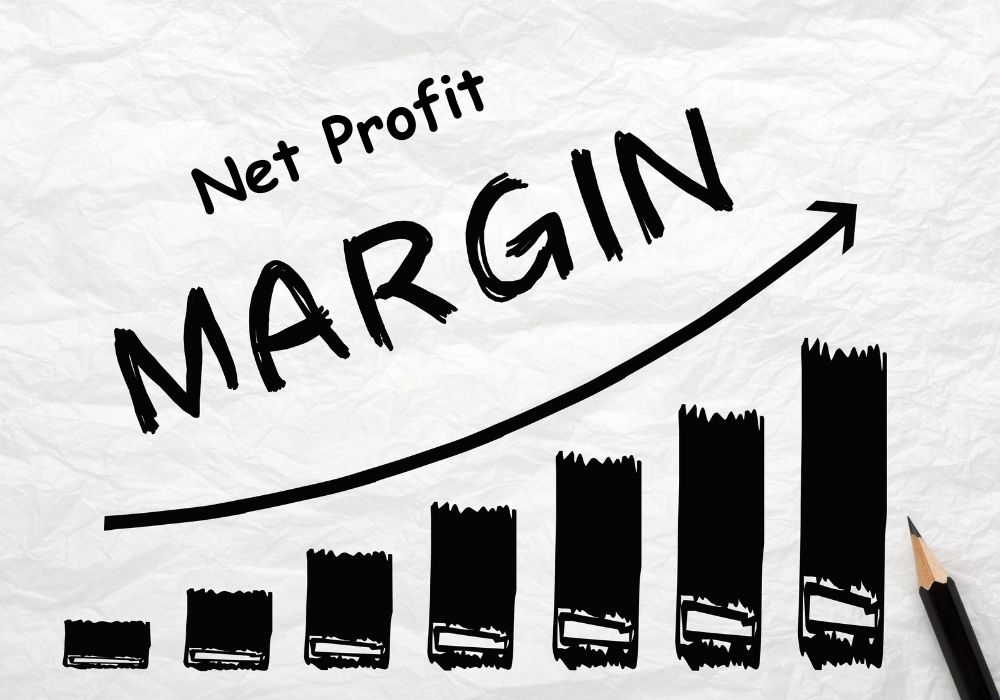- What Is Accrual Accounting?
- Key Principles
- Why Choose Accrual Accounting for Your Business?
- Benefits
- How to use Accrual Accounting
- Tools and Software
- Challenges
- Strategies for Accurate Estimations
- Accrual Accounting in Different Industries
- Adapting to Sector-Specific Needs
- Advanced Topics in Accrual Accounting
- Navigating Regulatory Changes
- How To Measure Success
- Integrating with Broader Analytics
- FAQs
Wondering how businesses keep their finances straight, even when cash isn’t flowing yet? I’ll simplify accrual accounting, pulling from real-world lessons to make it clear for even a 15-year-old.
Not only does it help you understand money moves for a family project, but it also shows how companies worldwide stay organized.
Did you know 78% of U.S. businesses with over $1 million in revenue use accrual accounting to meet financial standards? Whether you’re curious about tracking funds or helping out a school club, you’ll discover why this method is a must and how to use it like a pro. Let’s dive in!
What Is Accrual Accounting?
Accrual accounting is like keeping score of your money in a way that shows what’s really happening in your business, even if the cash hasn’t shown up yet.
Imagine you agree in December to help a friend with a project, and they promise to pay you in January when it’s done.
With accrual accounting, you count that money as yours in December, when you made the deal, not when they actually hand you the cash.
This way, your financial records show the full picture of what you’ve earned and spent during a certain time.
Why does this differ from cash basis accounting? Cash basis waits for actual money movement, simple for small operations but often misleading for growing enterprises.
Accrual, on the other hand, paints a fuller picture, especially when dealing with credit sales or prepaid expenses.
During a project I managed years ago, switching to accrual revealed hidden liabilities that cash tracking overlooked, preventing a nasty surprise at tax time.
You can think of accrual as a time traveler for transactions—bringing future obligations into the present for better decision-making.
Not only does it comply with standards like GAAP (Generally Accepted Accounting Principles), but it also helps in forecasting cash needs more accurately.
Key Principles
Accrual accounting works because of two big ideas: the revenue recognition principle and the matching principle.
The revenue recognition principle means you write down money as soon as you earn it, like when you finish a job, even if the cash comes later.
For example, if you tutor someone and send them a bill halfway through the month, you count that money right away.
The matching principle ties what you spend to what you earn. If you buy paint for a school art project, you record that cost when you sell the artwork, not when you paid for the paint.
This keeps your records honest about how much you’re really making. Once, in a school club, mixing up costs made a project look way more profitable than it was, confusing everyone until accrual fixed it.
You’ll also do some end-of-month tweaks called accruals. These are notes about money you’re owed, like for tutoring you’ve done but haven’t been paid for yet, or bills you owe, like for supplies you got but haven’t paid for. These updates, though a bit boring, keep your books accurate and fair.
Why Choose Accrual Accounting for Your Business?
Switching to accrual is like going from a clunky old bike to a sleek skateboard—it takes some practice but makes things way smoother.
It gives a full view of your money situation, which is awesome if you’re asking a bank for a loan or trying to impress people who might back your project.
Banks prefer accrual because it shows what you owe and what’s coming in, not just the cash you have right now.
As your project gets bigger—maybe you’re selling custom phone cases or coding apps—cash accounting starts to break down. It can’t keep up with stuff like inventory or deals where people pay you later.
Accrual handles these easily, keeping track of what’s owed so you spot money gaps early. In a tech club, switching to accrual showed some kids were late paying for their project kits, so the team could fix things before it got messy.
Plus, many businesses need accrual to follow rules like GAAP or IFRS. Did you know publicly traded companies must use accrual to comply with these standards? Even for smaller setups, it keeps you organized and ready to grow.
Benefits
One standout advantage lies in performance measurement. By matching costs to revenues, you gauge true profitability per project or department, fostering better resource allocation.
During a restructuring effort I oversaw, accrual reports spotlighted underperforming segments, guiding cuts that preserved overall viability.
Tax planning emerges as another perk, since accrual can smooth income recognition, potentially deferring liabilities.
Yet, beware the double-edged sword: it might accelerate expense recognition too, demanding careful timing. Compliance eases with accrual, as it aligns with audit expectations, reducing scrutiny risks.
Finally, accrual enhances budgeting. With historical data reflecting economic reality, you forecast more reliably, adjusting for seasonal fluctuations or economic shifts.
This foresight, honed through repeated cycles, turns potential pitfalls into planned strategies.
How to use Accrual Accounting
Getting started with accrual accounting requires methodical steps, blending software savvy with procedural tweaks.
Begin by assessing your current setup—review ledgers for cash-only entries and identify adjustments needed. Tools like QuickBooks or Xero streamline this, automating journal entries for accruals.
First, establish your chart of accounts to categorize transactions precisely: separate revenue streams, expense types, and asset/liability classes.
Then, train your team on recognition rules, emphasizing documentation for every deal—contracts, invoices, delivery proofs. In a finance role I held earlier, standardizing these docs cut errors by half, making month-end closes far less stressful.
Next, set up routines for period-end accruals. Scan for unbilled work, estimate amounts based on progress, and post adjusting entries.
Debit accrued revenue, credit accounts receivable; reverse for expenses. Consistency here prevents carryover distortions.
Tools and Software
Leveraging software transforms accrual from chore to routine. QuickBooks Online, for one, flags pending accruals via dashboards, integrating with bank feeds for real-time updates.
Advanced users might turn to ERP systems like SAP, ideal for multifaceted operations.
Customization matters: configure alerts for aging receivables, ensuring timely collections. During implementation at a former employer, integrating accrual modules with CRM tools linked sales pipelines to accounting, accelerating revenue logging.
Don’t overlook backups and audits—regular reconciliations verify accuracy, catching discrepancies early. As you refine, metrics like days sales outstanding improve, signaling operational health.
Challenges
Accrual accounting isn’t without hurdles; estimates introduce subjectivity, potentially skewing results if poorly judged. Overestimating revenues, for example, can lead to write-offs later, eroding trust.
To counter this, base projections on historical data and conservative assumptions, reviewing quarterly.
Cash flow mismatches pose another issue—recognizing income without inflow strains liquidity. Bridge this by monitoring working capital ratios and negotiating favorable terms with suppliers.
I recall a quarter where aggressive accrual entries masked a cash crunch; implementing rolling forecasts averted recurrence.
Complexity in multi-entity setups, like subsidiaries abroad, demands consolidated reporting under varying standards. Seek expert guidance here, perhaps from CPAs versed in international nuances, to harmonize practices.
Strategies for Accurate Estimations
Refining estimates involves iterative learning. Start with variance analysis: compare actuals to accruals post-period, adjusting methodologies accordingly.
Collaborative input from operations teams enriches accuracy, as they grasp on-ground realities better than spreadsheets alone.
Audit trails fortify defenses—document rationales for each accrual, supporting defensibility during reviews. Over time, these habits build resilience, turning challenges into strengths.
Accrual Accounting in Different Industries
Tailoring accrual to sectors reveals its versatility. In manufacturing, it tracks work-in-progress inventories, accruing costs as production advances, matching to sales upon completion. This visibility aids pricing decisions, ensuring margins hold.
Service industries, meanwhile, accrue billable hours meticulously, recognizing partial revenues for ongoing engagements.
Tech firms, with subscription models, amortize setup costs over contract lives, smoothing earnings.
Retail leverages accrual for vendor rebates and returns provisions, adjusting for expected volumes. In my consulting days across healthcare, accrual illuminated deferred revenues from long-term patient plans, aligning with regulatory filings.
Adapting to Sector-Specific Needs
Customization shines in nuances: construction accrues based on percentage completion, while nonprofits match grants to program expenses. Understanding these tweaks ensures relevance, avoiding generic pitfalls.
Advanced Topics in Accrual Accounting
Delving deeper, consider revenue from contracts under ASC 606, mandating five-step recognition: identify contract, performance obligations, transaction price, allocate, recognize upon satisfaction. This framework, though detailed, clarifies complex deals.
Leases under ASC 842 now accrue right-of-use assets and liabilities, impacting balance sheets profoundly. For those in finance, mastering these updates keeps you compliant amid evolving rules.
Impairment testing for assets, accruing losses when value drops, adds vigilance. Periodic reviews, guided by indicators like market shifts, preserve statement integrity.
Navigating Regulatory Changes
Staying abreast requires subscriptions to updates from FASB or IASB, coupled with internal training. In a compliance project I led, proactive webinars mitigated transition pains, maintaining audit readiness.
How To Measure Success
Key indicators like gross margin, calculated post-matching, reveal efficiency. Current ratio, bolstered by accrued insights, assesses liquidity without cash illusions.
Return on assets, factoring depreciated values, gauges utilization. Track these via KPIs dashboards, correlating to strategic goals.
In practice, benchmarking against peers illuminates gaps—something quarterly reviews in my past roles consistently highlighted, driving refinements.
Integrating with Broader Analytics
Pair accrual data with BI tools for visualizations, uncovering trends like seasonal accruals. This integration, fostering data-driven cultures, elevates decision quality.
FAQs
Accrual accounting tracks money when you earn or owe it, not when it actually moves.
For example, if you sell a custom T-shirt on credit, you count that sale right away, helping you plan for future cash needs. Cash accounting, though, waits until the money’s in your hand, which can make planning trickier.
Going over accruals every month is a smart move for small projects. Since mistakes can pile up and mess with your reports, checking regularly as part of your wrap-up routine keeps things smooth without taking over your day.
Yes, spreading out income and expenses over time can sometimes lower your taxes for a year, but you must stick to tax laws to stay out of trouble. Talking to a tax expert early helps set up accruals the right way.
When things get complex, switching to powerful software like ERP systems is a must.
These connect all your data, like sales and bills, for smoother tracking. It’s a bit of work to set up, but it saves time and reduce errors as you grow.







